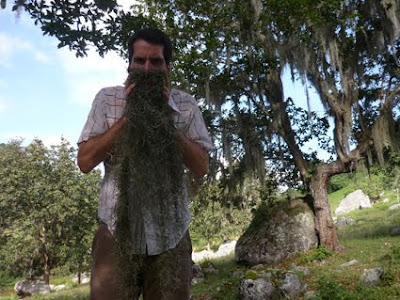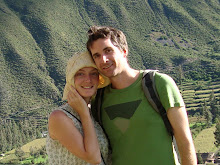
Last week we attended the burial of a local mum who died in childbirth after a complicated pregnancy with her third child. Her baby daughter survived and will be brought up by an aunt in Esteli. Her two other children, Walter and Juan Ramon, are eight and six, and in Simon's Spanish and Maths classes. At least for now, they are staying in the community with their dad.
Nicaraguans bury their dead usually within twenty four hours of them dying, and it is a big community affair. The evening of the death, the family holds an all-night wake. For this lady, over 300 people attended. Her parents' home is two hours walk through the hills from Sontule but over 40 people went from the village, returning in the early hours of the morning. That afternoon, friends dug the grave in the cemetery, a beautiful, shady spot in the mountains in Sontule. The next morning, the whole community headed for the cemetery, including lots of children, to await the arrival of the family with the coffin from the neighbouring community. Nobody knew what time it would arrive, and whether it would be carried through the hills or brought in a pick-up truck. In the end, it was a pick-up that appeared with around twenty people crammed into the back along with the coffin. We waited in the cemetery for a couple of hours, and were given a bit of a tour of the graves by our friends. Rogelio and Lucia's relatives are all buried here, as well as some notable locals killed by the Contra in the 1980s. Another little boy from the school matter-of-factly showed us his mum's grave.
 Next to Lucia's family's graves, including a daughter who died as a baby.
Next to Lucia's family's graves, including a daughter who died as a baby.
There were a few striking things for us about this funeral. Despite this being a really tragic death, the community was typically stoical about it. They had all visited the family already and offered their condolences. In the cemetery there was a lack of drama, collective grief and dark, formal clothing. There was more of a feeling of the community simply gathering to pay their respects, offer support and do what had to be done in putting the coffin into the ground. It seemed very natural to include children in the event. Many children had bunches of flowers from their gardens and either looked on curiously or played quietly in the background. Walter and Juan Ramon, her two sons, spent most of the time sadly looking on, but also looking round and showing interest in the whole event. At one point, Juan Ramon looked over, recognised us and gave us a big smile.

Lucia and Rogelio led a few prayers and singing before the local men lowered the coffin into the grave and took turns to fill in the earth. The family take no part in the physical act of carrying or burying the body. All of the community waited until the grave had been filled, sitting around in small groups chatting or gathered around the grave, before laying flowers on it and heading off to carry on with the day's work.
 This was the thing that got me known around the community as the whole school knew who I was and so all their families did too.
This was the thing that got me known around the community as the whole school knew who I was and so all their families did too.  Playtimes last a good hour and mainly involve the boys playing baseball or pretending to shoot one another, while the girls organise themselves into friendly team games. The views never got boring.
Playtimes last a good hour and mainly involve the boys playing baseball or pretending to shoot one another, while the girls organise themselves into friendly team games. The views never got boring.











































